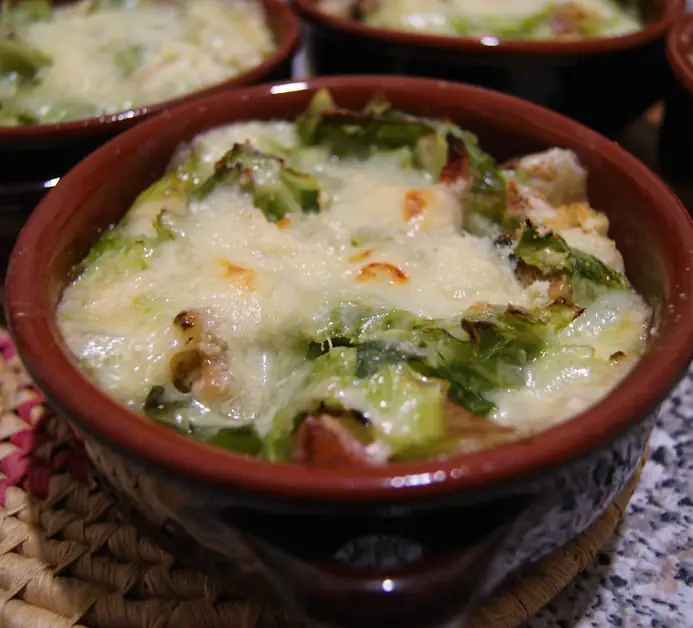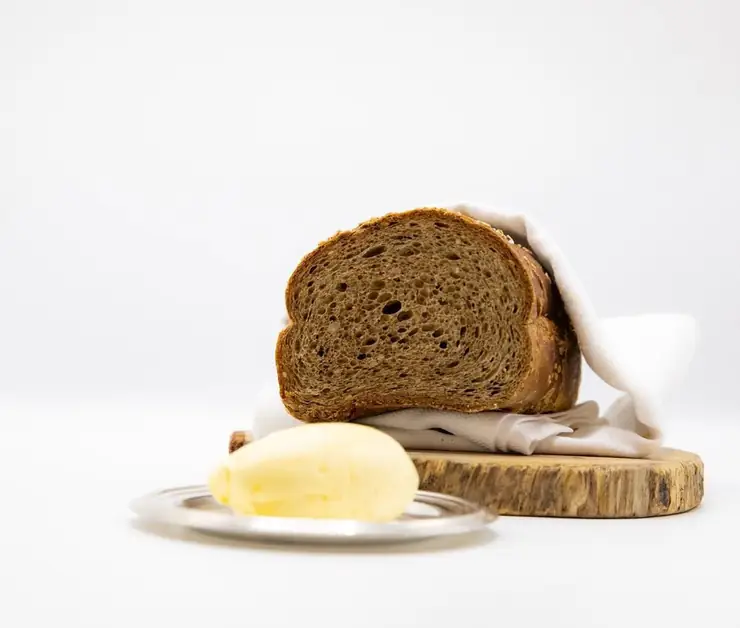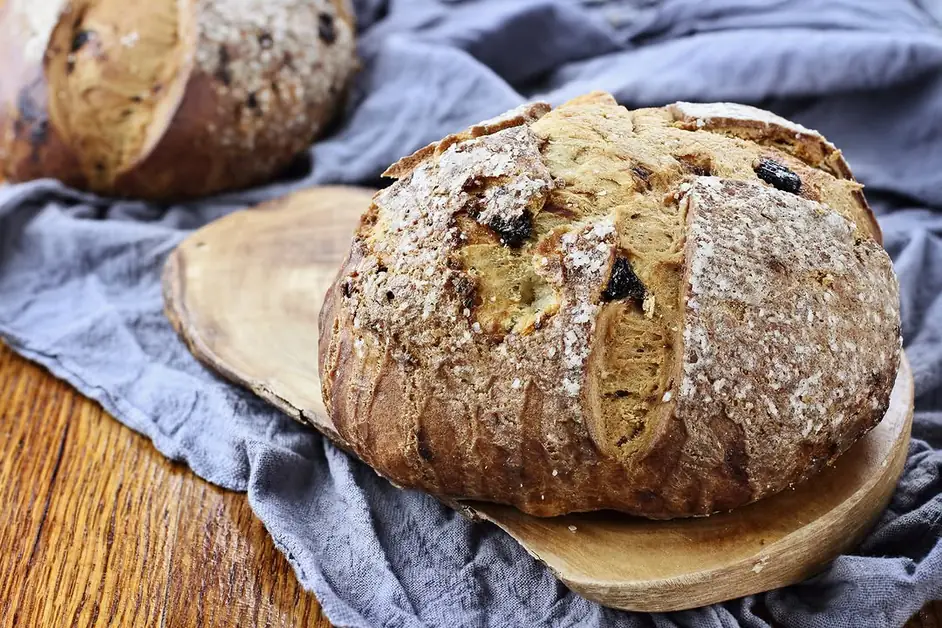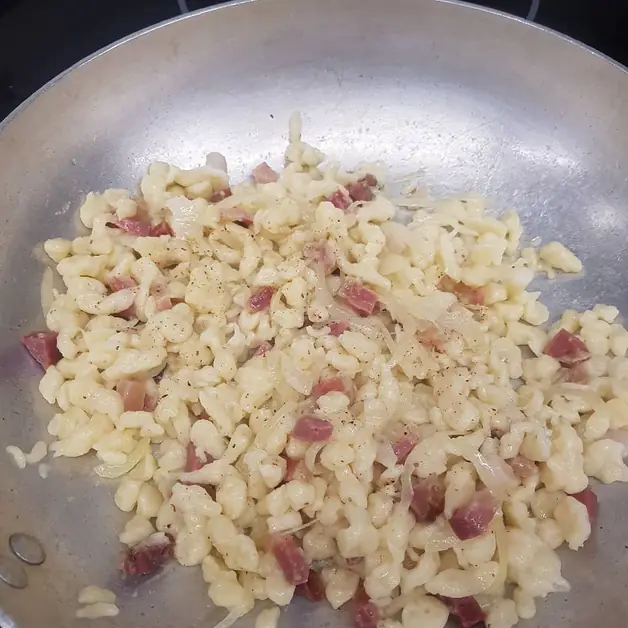The valdostana carbonada a dish you must try
Valdostana carbonada is a traditional dish rich in flavor.
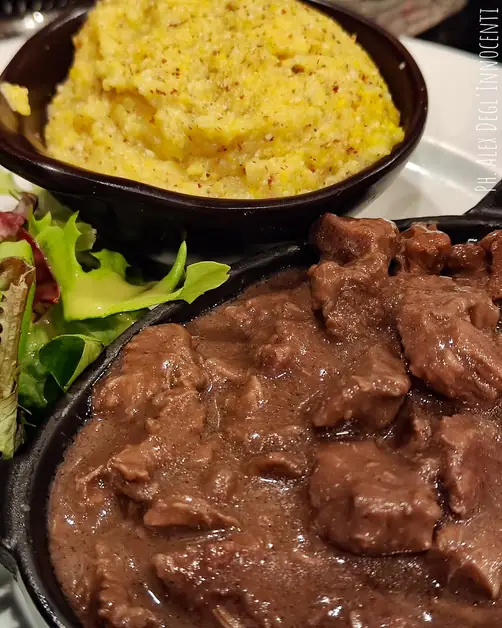
What is valdostana carbonada?
Carbonada is a typical dish from the Aosta Valley, an ancient recipe rich in flavor that tells the story of mountain traditions. It is a beef stew slowly cooked in spiced red wine with plenty of onions. The result is an incredibly tender meat, with an intense flavor and a dark color, almost like coal, from which the dish gets its name.
Why is carbonada so loved in the Aosta Valley?
Valdostana carbonada is very popular because it combines simplicity and taste. It is a hearty dish, perfect for the cold months when one desires something warm and comforting. Served with polenta or mashed potatoes, it becomes a unique dish typical of Sunday lunches or dinners in a refuge after a day on the snow.
What are the main ingredients of carbonada?
The basic ingredients are few but carefully chosen. For four people you need:
800 g of beef rump 600 g of full-bodied red wine 200 g of onions 2 sticks of cinnamon 2 bay leaves 10 black peppercorns 5 juniper berries 5 cloves
For cooking:
60 g of carrots 60 g of celery 20 g of all-purpose flour 100 g of extra virgin olive oil Vegetable broth as needed Salt and pepper to taste.
What allergens does valdostana carbonada contain?
The recipe contains some allergens: sulfur dioxide and sulfites (present in the wine), celery, and cereals derived from flour. It is therefore important to take this into account if you have food intolerances.
How do you prepare the marinade for carbonada?
The secret to the goodness of carbonada lies in the marinade. The day before cooking, cut the meat into cubes of about 3 cm and place it in a container with red wine, whole onions (into which you insert the cloves), crushed juniper berries, and the other spices. Cover everything with plastic wrap and let it rest in the refrigerator for 24 hours. This way, the meat absorbs all the aromas and becomes incredibly tender.
How is carbonada cooked?
After 24 hours of marinating, drain the meat, keeping the wine and vegetables aside. Pat the meat dry with paper towels, dust it with flour, and brown it in a large pot with extra virgin olive oil. This step helps seal the meat and keep it juicy. Once well browned, remove the meat from the pot and set it aside.
In the same pot, add the carrots, celery, and onions from the marinade, finely chopped. After 10 minutes of browning, return the meat to the pot and add the marinade wine along with a couple of ladles of vegetable broth. Cover with a lid and let it cook slowly for about two hours. During cooking, add more broth if necessary.
How is valdostana carbonada served?
At the end of cooking, the meat should be incredibly tender and enveloped in a dark, thick sauce. Adjust with salt and pepper and serve hot. The traditional way to enjoy it is with steaming polenta, but it also pairs well with creamy mashed potatoes. In both cases, the meat sauce perfectly complements the soft, neutral base.
Why is it important to brown the meat well?
Browning the meat is a fundamental step. It helps create a crust that keeps the juices inside the pieces. This way, the meat remains tender and flavorful even after hours of slow cooking in wine. Without this phase, the final result would be less rich in flavor.
What are the variations of valdostana carbonada?
The traditional carbonada of the Aosta Valley is prepared with red wine, but there are many variations. In Belgium and northern France, the same recipe is known as carbonade or carbonnade and is cooked with beer instead of wine. There, the meat was often preserved in brine and had a stronger flavor, which was sweetened with onions and long cooking.
Another Italian variant is the braised beef in Barolo, typical of Piedmont, or the Irish-inspired Guinness stew. All these dishes share the same philosophy: slow cooking, simple ingredients, and deep flavors.
Where does the name "carbonada" come from?
The name comes from the dark color that the meat takes on during the long cooking in red wine. It becomes almost black, like coal. This intense color is the dish's hallmark and makes it immediately recognizable.
What is the historical origin of valdostana carbonada?
Valdostana carbonada has ancient roots and ties to French and Belgian cuisine. In the past centuries, beef was often preserved in brine and thus had a very strong flavor. To sweeten it, large amounts of onions and wine were added during cooking. Over time, this tradition also reached the Italian alpine regions, where it was adapted with local products.
Which wine to choose for the marinade?
The ideal wine for carbonada is a full-bodied, aromatic red. In the Aosta Valley, a local wine such as Torrette or Donnas is often used. These are wines with a strong character, perfect for flavoring the meat without overpowering its taste.
Is carbonada a dish suitable for tourists?
Absolutely yes. Tourists visiting the Aosta Valley can taste carbonada in typical restaurants or mountain refuges. It is a dish that tells the story and identity of this region, ideal for those who want to discover the authentic flavors of the Italian Alps. After a day on the slopes or a walk through the villages, a plate of carbonada with polenta is the perfect conclusion.
How to store valdostana carbonada?
Carbonada can be easily stored in the refrigerator for two or three days, sealed in an airtight container. In fact, the next day it is even better because the flavors meld better. It can also be frozen if prepared with fresh ingredients.
Where can you eat carbonada in the Aosta Valley?
Many restaurants in Aosta serve carbonada, especially in winter. It is often found on holiday menus or during local festivals. Some mountain refuges offer it as a dish of the day, accompanied by rustic polenta prepared on the spot.
What makes carbonada different from other Italian stews?
The main difference lies in the wine and onions. The long marinating and large amount of onions give carbonada a unique, sweet, and aromatic flavor. It is not just a simple stew: it is a traditional dish that encapsulates centuries of history and peasant wisdom.
Is it possible to cook carbonada at home even if you are not an expert?
Yes, it is a simple recipe but requires patience. The important thing is to respect the marinating and cooking times. With a little attention, even those who are not experts can achieve a perfect, fragrant, and tender carbonada, just like the one served in mountain restaurants.
